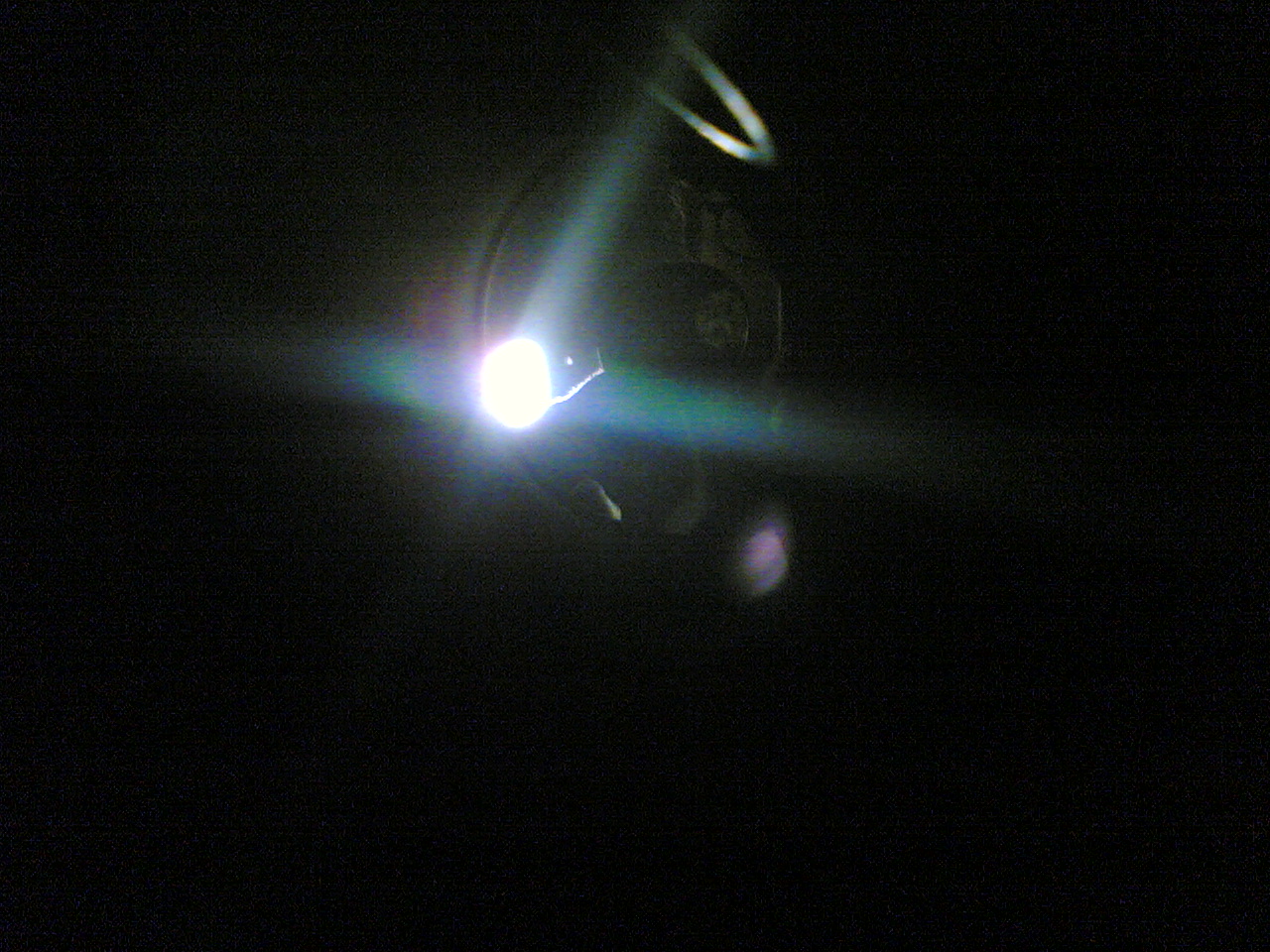

'O my dear Wife, said he, and you the children of my bowels, I your dear friend am in myself undone, by reason of a burden that lieth hard upon me: moreover, I am for certain informed, that this our City will be burned with fire from Heaven, in which fearful overthrow, both myself, with thee, my Wife, and you my sweet babes, shall miserably come to ruine; except (the which, yet I see not) some way of escape can be found, whereby we may be delivered.'
John Bunyan, The Pilgrim's Progress (1678)
* * *
'To the question, What shall we do to be saved in this World? there is no other answer but this, Look to your Moat.'
George Savile, 1st Marquess of Halifax, A Rough Draft of a New Model at Sea (1694)
* * *
'Quelle eſt donc l'immensité du Firmament entier, qui comprend dans ſon enceinte tous ces différens Corps? peut-on ſeulement y penſer, & y arrêter ſa vue pour quelques momens, ſans être confondu, troublé, épouvanté? C'est un abîme où l'on ſe perd. Quelle eſt donc la grandeur, la puiſſance, l'immenſité de celui qui a formé d'une ſeule parole, & ces maſſes énormes, & les eſpaces qui les contienent! Et ces merveilles incompréhensible à l'Eſprit Humain, l'Ecriture Sainte, d'un stile qui n'appartient qu'à Dieu, les exprime en un mot, & ſtellas. Après avoir rapporté la création du Soleil & de la Lune, elle ajoute, il fit auſſi les Etoiles. Faut-il autre choſe, pour rendre l'incrédulité ou l'ingratitude des hommes inexcuſable, que ce Livre du Firmament écrit en caractères de lumière? Et le Prophète n'a-t-il pas raiſon de s'écrier, plein d'une admiration religieuſe: "Les Cieux annoncent la gloire de Dieu, & le Firmament publie les merveilles de ſa puiſſance?"'
Charles Rollin, Histoire Ancienne des Egyptiens, des Carthaginois, des Assyriens, des Babyloniens, des Medes et des Perses, des Macedoniens, des Grecs, Vol. XIII, 'Reflexions sur l'Astronomie' (1739)
The following pages feature a selection of my astronomical observations over the years.
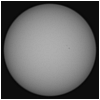 Sol
Sol
The star Sol; to most people that's the Sun. It is possible to make telescopic observations of the Sun, but only in daylight. And then you have to be very careful not to permanently burn out your retina.
* * *
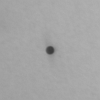 Mercury
Mercury
Mercury is difficult to observe in any detail, and very tricky for me to observe at all from my urban location, and I've only managed it once.
* * *
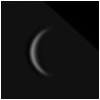 Venus
Venus
Venus, which like the Moon can be seen in daylight and shows phases. The dense surface cloud layers may also be observed.
* * *
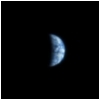 Terra Mater
Terra Mater
The Earth is the only planet mistakenly believed not to be named after a Roman Deity. As a world she is singular for other reasons as well.
* * *
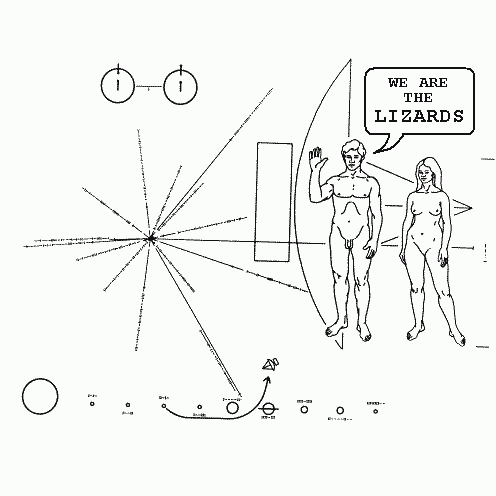 Spacecraft
Spacecraft
It is quite possible nowadays to observe orbiting spacecraft without a telescope, or even binoculars. In fact it has become impossible not to.
* * *
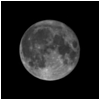 Luna
Luna
Luna; the Moon in other words. Though largely inactive now, this little world is so nearby and visible in such detail that there is always something new to observe.
* * *
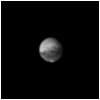 Mars
Mars
Mars; a dynamic and eerily Earth-like world which is notoriously difficult to observe except around the just-over-two-yearly oppositions.
* * *
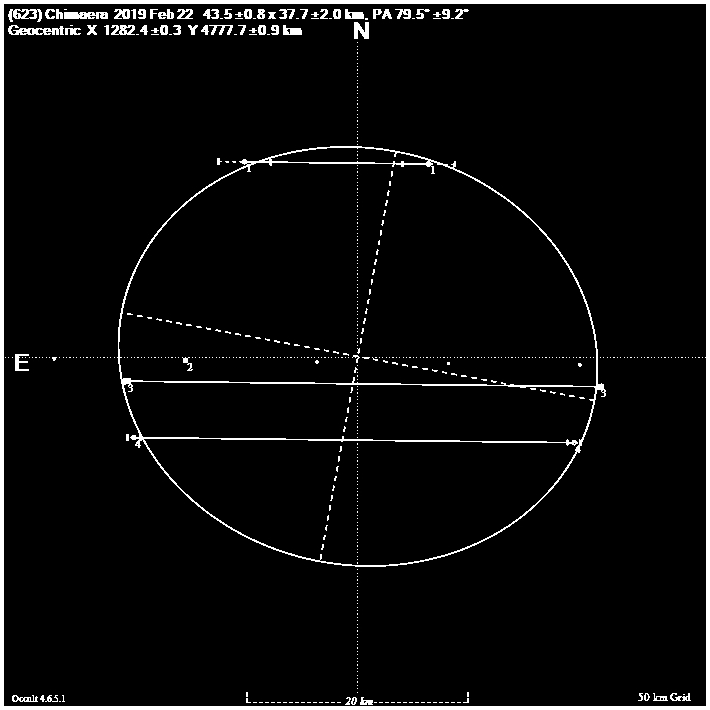 Asteroids
Asteroids
Many thousands of these tiny worlds orbit the Sun mainly between Mars and Jupiter, and there are many more to be discovered, even by amateurs.
* * *
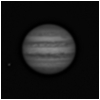 Jupiter
Jupiter
Jupiter's huge disc reveals constantly-changing weather systems which are monitored by astronomers throughout his apparitions. The attendant satellites are also studied.
* * *
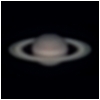 Saturn
Saturn
With his gigantic ring system, Saturn is always an awesome spectacle, but there is also much observable activity in the weather systems and on the rings themselves.
* * *
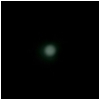 Uranus
Uranus
This remote world is at the edge of my ability to observe surface detail.
* * *
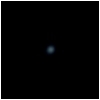 Neptune
Neptune
Neptune; the edge of the planetary Solar System from 1846 until the discovery of Pluto in 1930, and again from 1979 when Pluto crossed inside Neptune's orbit, until 1992 when QB1 was discovered. Very few astronomers have ever been able to observe detail on Neptune's tiny disc, and but for the limited information returned by the Voyager 2 fly-by of 1989 and the Hubble Space Telescope, this system is still largely unknown.
* * *
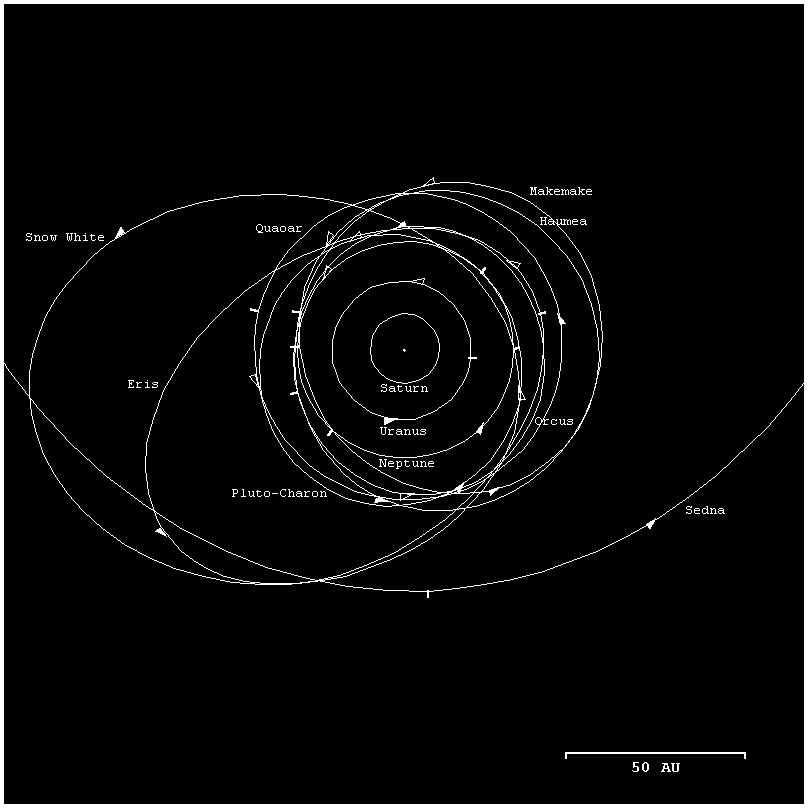 Pluto and the Kuiper Belt
Pluto and the Kuiper Belt
As yet I have been unable to observe Pluto; it is a feat just beyond my current capability. Nonetheless I will observe him eventually, and in the meantime you may wish to follow this link and take a look at the diagrams of the orbits of Kuiper Belt planets which I have put together.
* * *
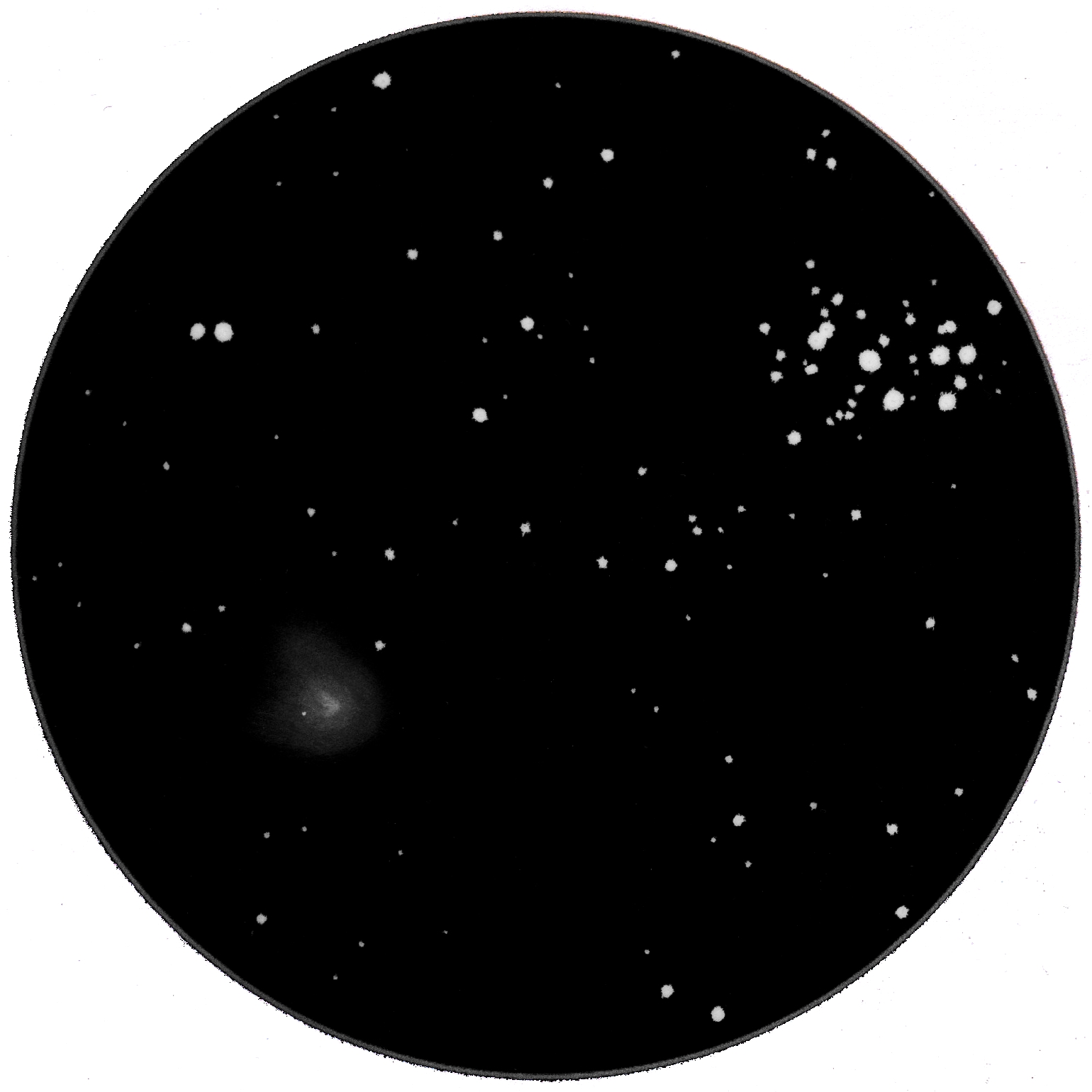 Comets
Comets
Errant icy bodies from the depths of the Solar System, straying close to the Sun and becoming visible as they evaporate in the Solar wind. There are literally trillions of these bodies, some of which have impacted the Earth from time to time throughout prehistory, causing global devastation. And one of them will certainly do so again one of these days.
* * *
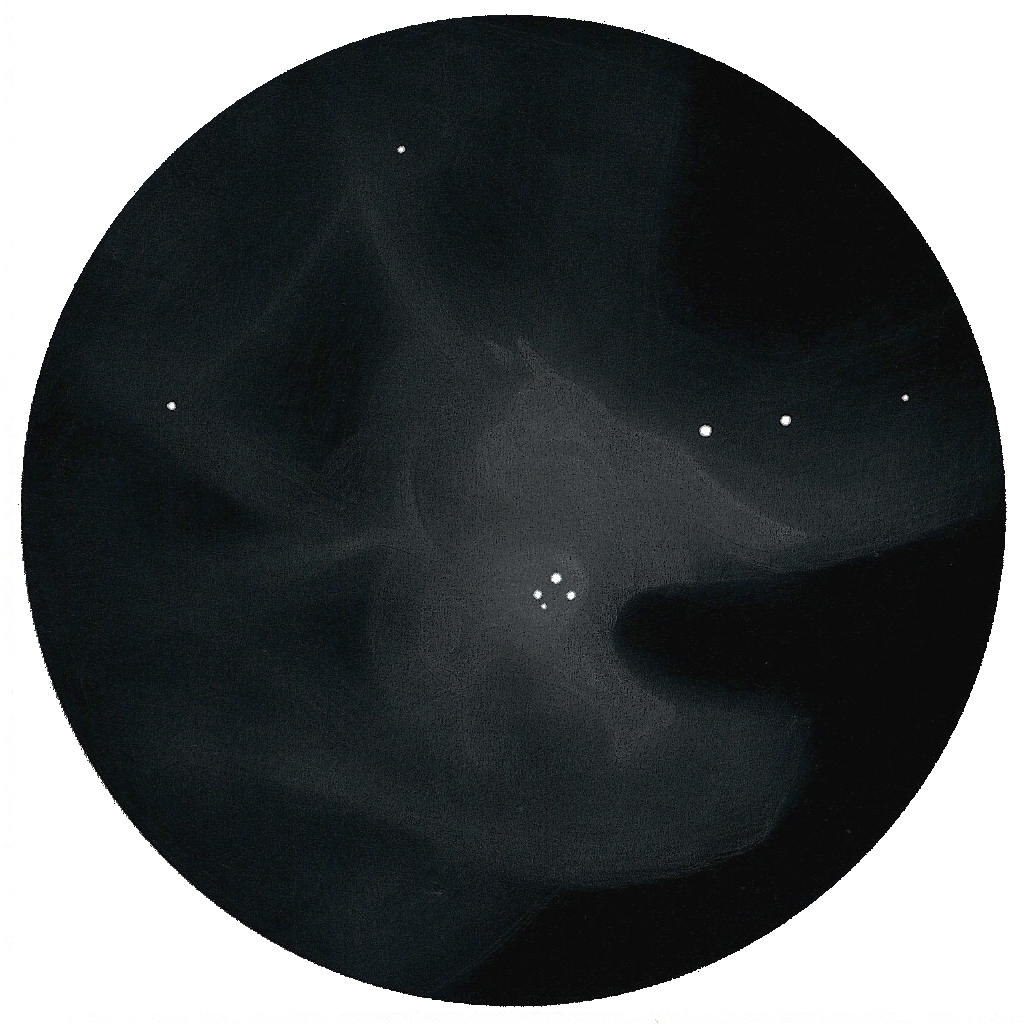 Deep Sky Observations
Deep Sky Observations
Remote objects within the Galactic neighbourhood of the Solar System, and other enormous galactic systems viewed from immense distances, that in most cases you need a telescope to observe at all.
* * *
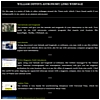 Links
Links
Links to astronomy and other websites that I have found helpful.
Equipment Used
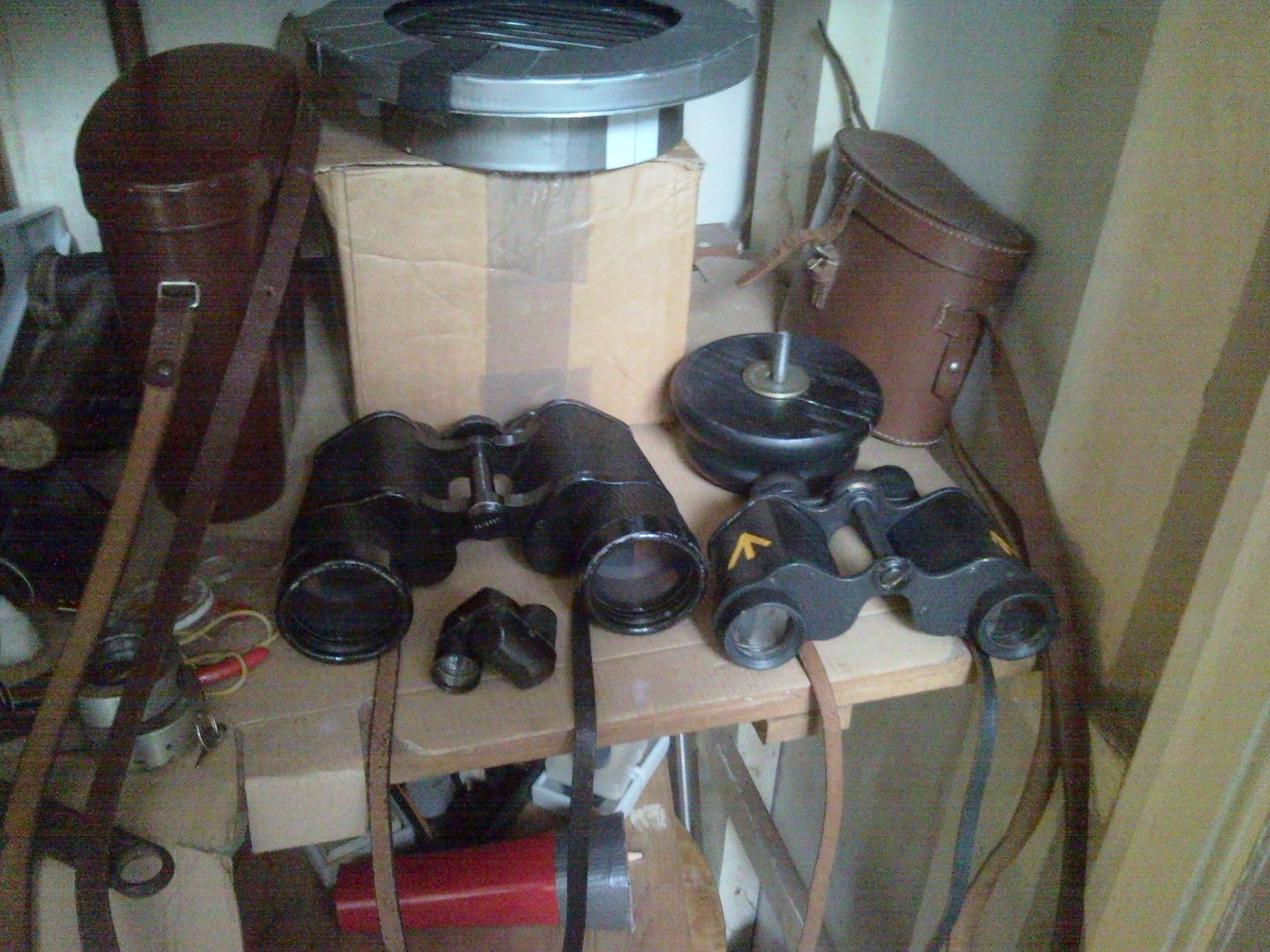
Zeiss 10×50mm ‘Jenoptem’ binocular (left),
Ross 6×30mm ‘Steproka’ [military] binocular (right), &
Zeiss 8×21mm ‘Turmon’ monocular (front)

Helios 8ʺ f/4 ‘Explorer’ Newtonian reflecting telescope, &
Celestron 4ʺ f/5 ‘Wide View’ achromatic refracting telescope (piggy-backed)
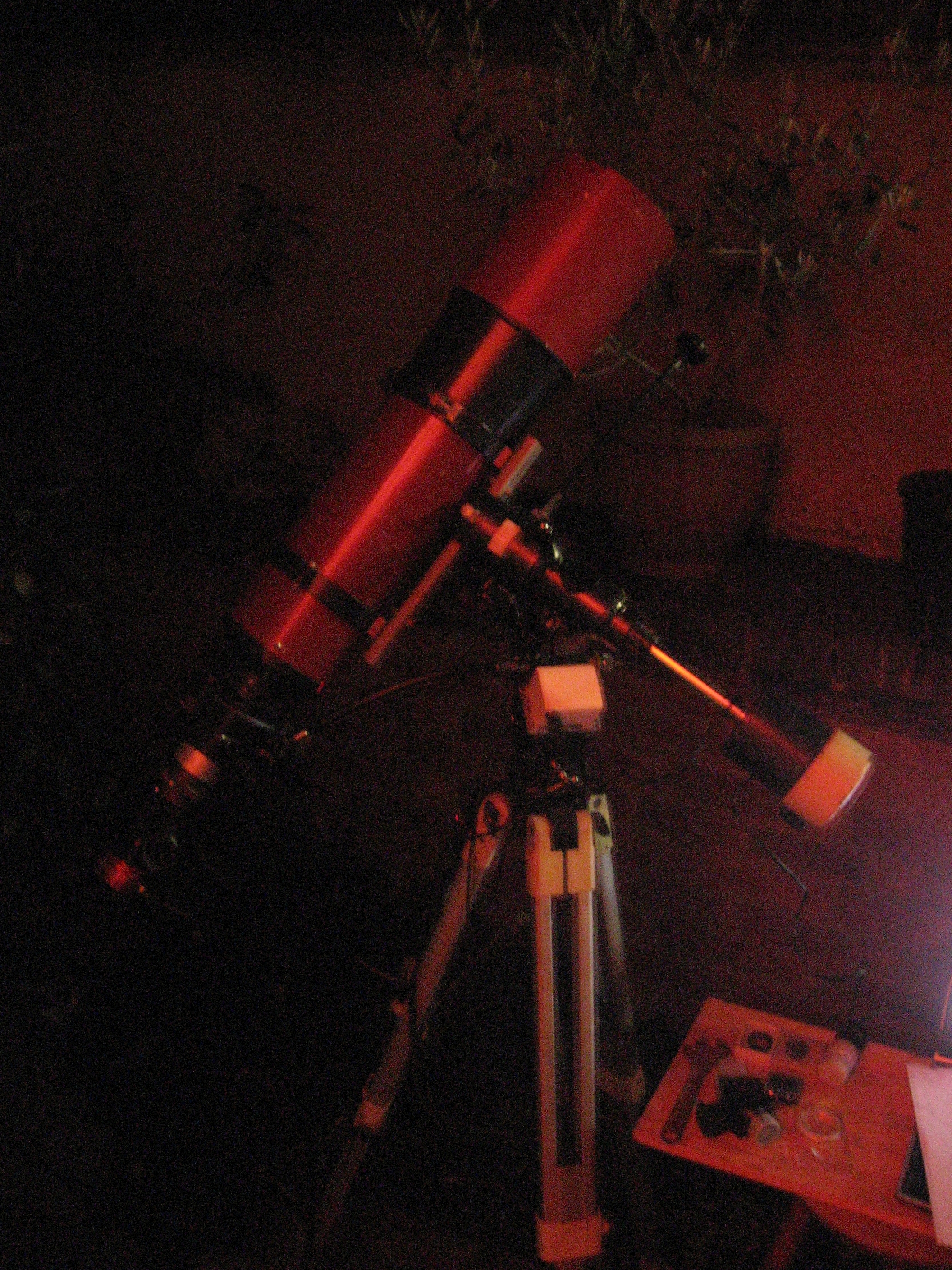
Skywatcher 6ʺ f/5 ‘Startravel’ achromatic refracting telescope

Fullerscopes 11¾ʺ f/5 ‘Export’ Newtonian reflecting telescope

Zwo ASI120MM 1.2Mpx CMOS &
Philips SPC900NC 0.3Mpx CCD
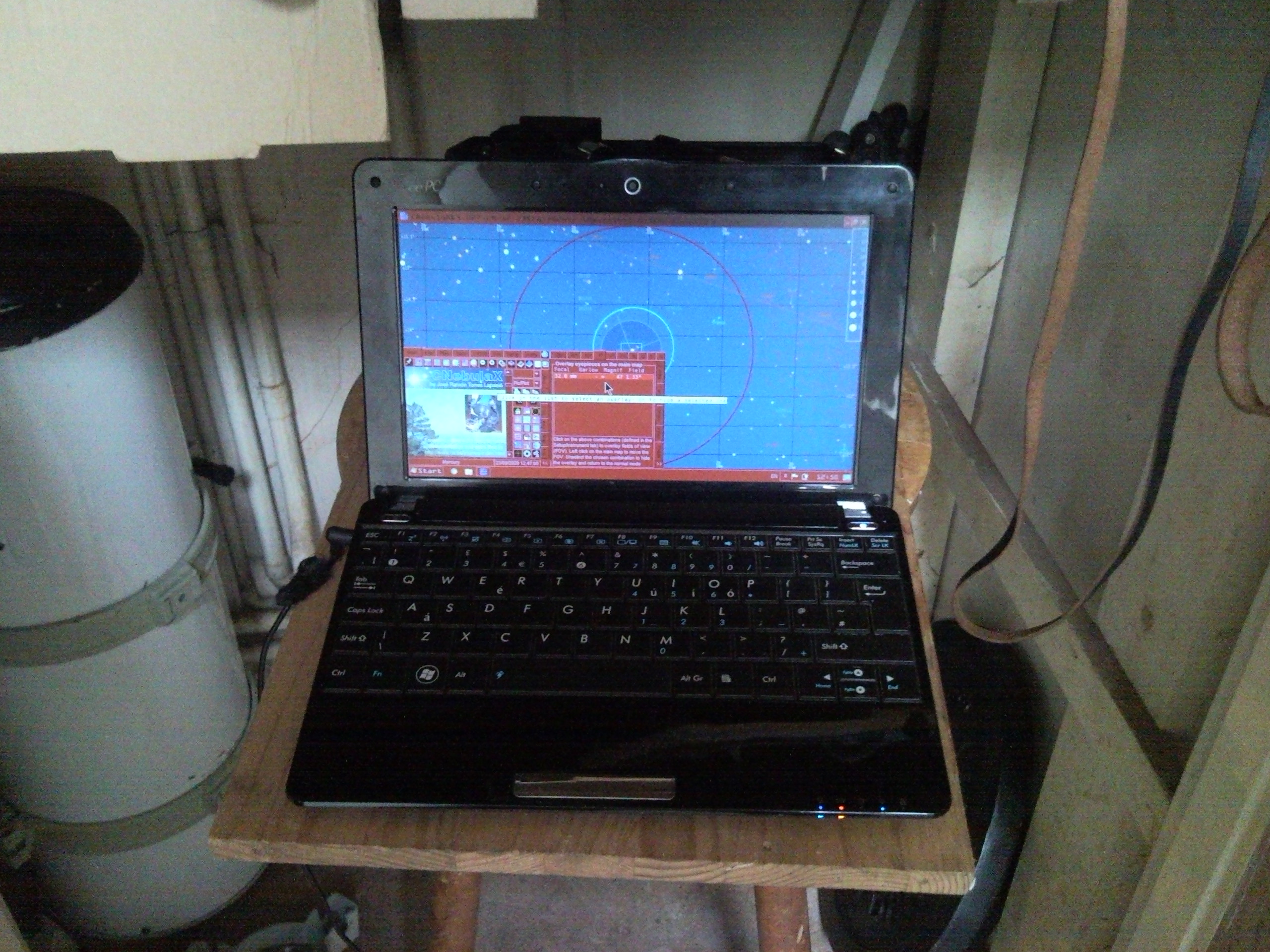
Asus 1005HA EEE PC used for image capture and navigation
If you have any questions, please feel free to click this email link: contact William Diffin and I will try to be gracious enough to answer them promptly.
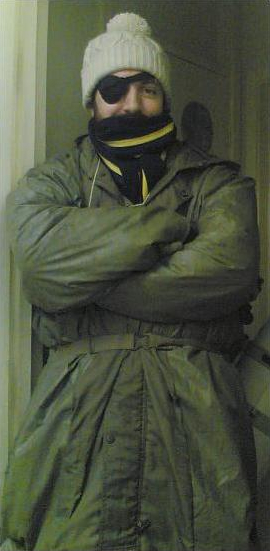
Good night then.